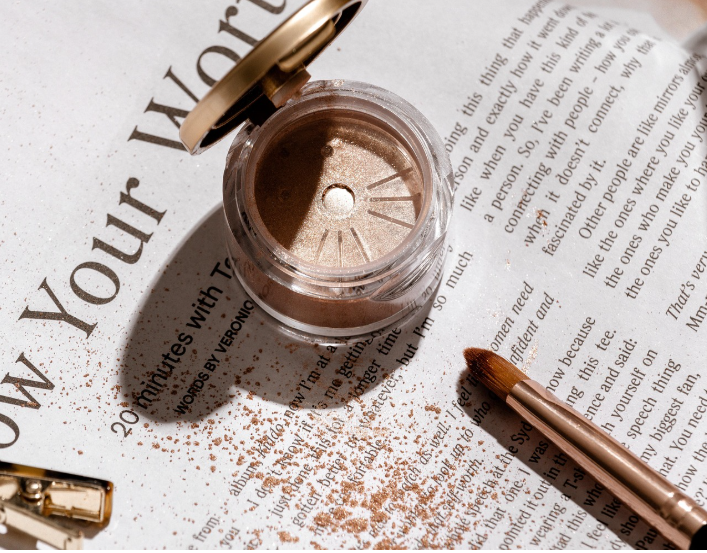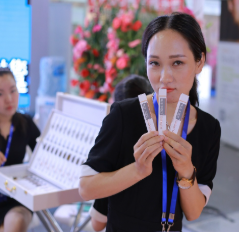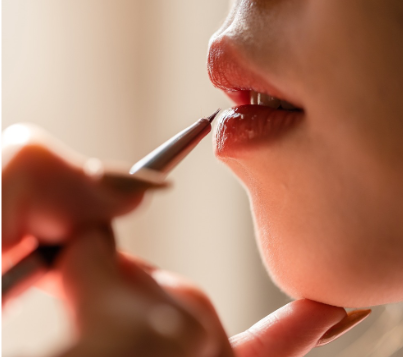How Internet Aesthetic Standards Affect Cosmetic Products Innovation?
By Xiao Qing, 10 January 2025
The network effect amplifies the influence of online platforms as user participation grows, shaping trends and behaviours across industries.

In today’s digital media landscape, the influence of internet celebrities and influencers has been steadily expanding through the virtual world. The network effect amplifies the influence of online platforms as user participation grows, shaping trends and behaviours across industries—especially in the beauty and cosmetic industry, which is among the most impacted by the internet.
The Popular of Influencer Marketing
Through social media platforms, filters, and viral trends, online spaces amplify and redefine beauty norms. This phenomenon influences consumer perceptions and drives innovation in industries like cosmetics, as companies adapt to meet evolving demands shaped by these standards. The impact of the internet on consumer beauty standards can be seen in the rise of influencer marketing, which has become one of the indispensable advertising methods for beauty brands to showcase their product to their target consumers.
According to a study, up to 86% of beauty brands in the United States use influencers as part of their marketing strategies (Barry, 2024). Cosmetic brands are increasingly relying on influencers to advertise and review products, as their reach and credibility can significantly boost sales. For example, TikTok influencers have revolutionised traditional advertising in the cosmetic industry by offering a more authentic and relatable way to promote products (Barry, 2024). Their influence connects with audiences on a personal level, making product endorsements feel approachable. This situation presents that influencers and distorted aesthetic standards on the internet significantly affect consumer choices.

Internet Aesthetics Shaping Cosmetic Innovation
A recent study revealed that nearly half of the respondents discovered skincare products through social media platforms, highlighting the significant role these platforms play in influencing consumer behaviour in the beauty and cosmetic industry (Alamer et al., 2023). For example, trends like the “hyaluronic acid lips” on TikTok not only inspire consumers to seek lip-plumping products but also drive cosmetic brands to innovate with lip-enhancing formulations, such as glosses and balms infused with volumising ingredients. Similarly, Instagram’s promotion of flawless skin drives the demand for high-performance beauty products like full-coverage foundations and concealers. Those online platforms especially social media set aspirational beauty standards, encouraging brands to prioritize products that cater to these ideals while also influencing the development of marketing strategies that resonate with trend-driven audiences.


Under this market that depends heavily on fast-paced trends and consumer demands, innovation of beauty products is often necessary to meet the standards of today’s Internet beauty aesthetic. However, while this has proven beneficial for businesses, it has also led to negative societal impacts. The constant push for new trends often contributes to unrealistic beauty standards, leading to a market where products become increasingly homogenous and standardized. This situation makes the market more repetitive, catering to a narrow definition of beauty, which further excludes alternative preferences. Hence, brands that focus on the latest beauty trends often produce similar products, blending into a crowded space. The pressure to conform to fast-moving trends hinders their ability to establish uniqueness, making it harder to stand out and build long-term brand loyalty.
In conclusion, the internet has significantly reshaped cosmetic product innovation by leading a fast-paced, trend-driven environment. Brands are compelled to continuously adapt, creating products that align with dynamic consumer expectations shaped by influencers and digital aesthetics. While this has spurred advancements and broadened market offerings, it also challenges the industry to balance trend responsiveness with originality and inclusivity. To sustain growth and relevance, cosmetic companies must innovate beyond transient trends, crafting products that cater to diverse needs while addressing the deeper societal impact of online beauty standards.
Want to Stay Updated on the Latest Beauty Industry Trends?
The International Beauty Expo (IBE) is making its grand return in June 2025 in Kuala Lumpur, Malaysia! Bringing together exhibitors from around the world, the event will showcase cutting-edge beauty products, technologies, and trends. It’s the perfect platform for industry professionals and beauty enthusiasts to exchange ideas and explore opportunities.
Stay tuned for more details on our website: https://ibe.my
References:
Barry, L. (2024). Influencing beauty: The impact of TikTok influencers on Gen Z and the cosmetic industry. Bryant University. https://digitalcommons.bryant.edu/cgi/viewcontent.cgi?article=1000&context=honors_mathematicseconomics
Alamer, M. A., Alrashed, H., Abuageelah, B. M., Kinkar, L. I., Alwayel, Z. A., Alfaifi, M. H., Alfataih, M. T., Alzakry, L. M., Alruwaili, Z. M., & Alhumam, A. A. (2023). Impact of social media on choosing skin care and cosmetic products among females in Saudi Arabia. Cureus, 15(12), e49922. https://doi.org/10.7759/cureus.49922